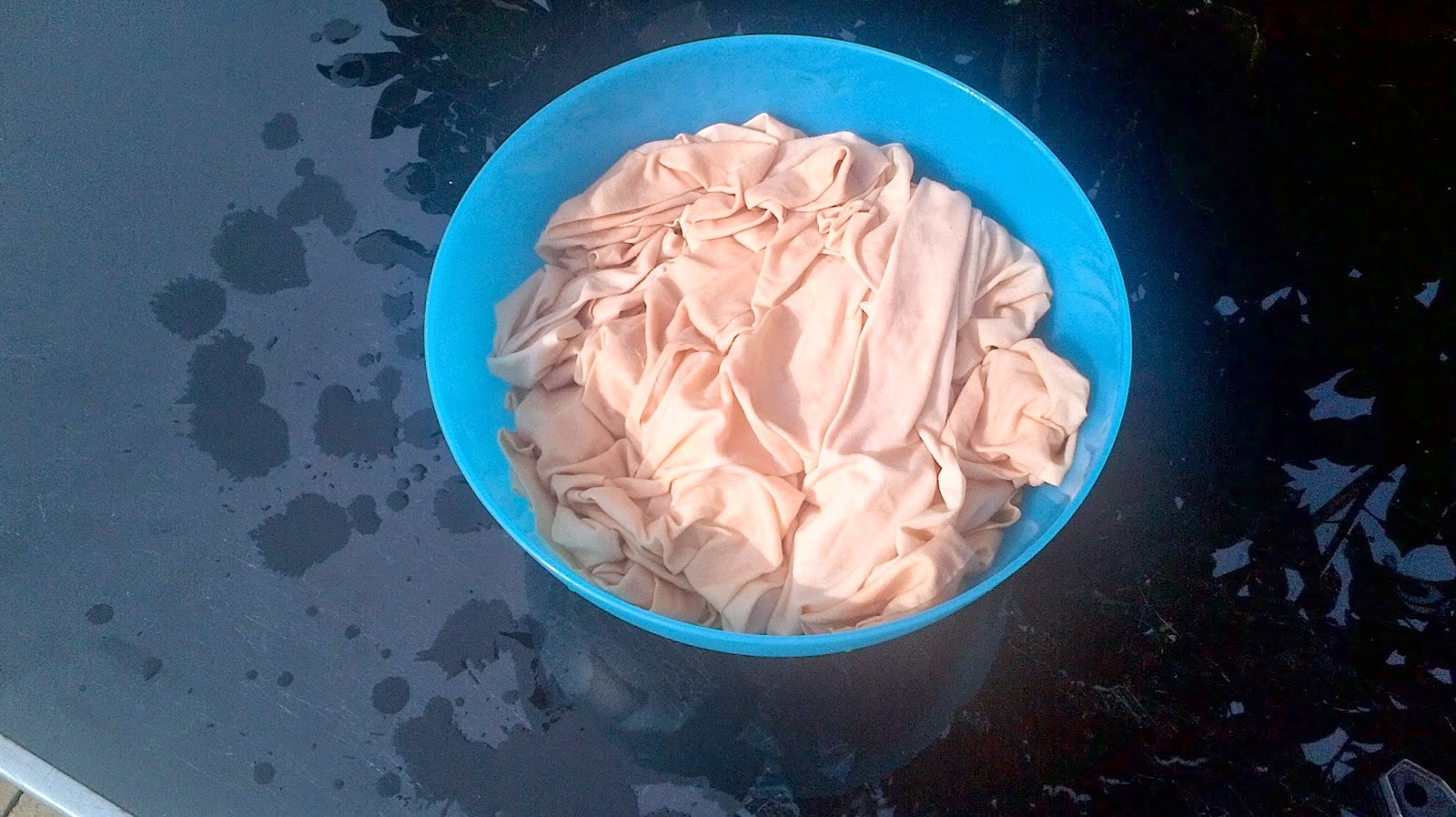Cutting out my shirt back and front , the sleeve , cuff and collar .
Sewing the shoulder of the shirt together and the side sem .Because the sem allowence is different to a full scale shirt , i had to use the pattern . If i used a different sem allowence hen the collar wouldn't have fit properly .
Cutting my collar in half because i am only doing half a shirt . The two notches on this collar are guide lines for positioning and fitting the collar .
The collar before i turned it inside out to hide the stiching .
 |
| This is the sleeve inside out , to fit the cuff you sew it to the sleeve inside out and back to front This makes the cuff have no stitching on the outside of the sleeve , giving a cleaner finish . |

Sewing the sleeve and turning it right side out after i have fitted the cuff.
The pros and cons of using natural dyes .
pros;
- You save alot of money on dye .
- You can get the colour you want and put it on the fabric you want
- It links with my breif because the American Indian tribes used their own homemade dyes and paints.
- Better for the enviroment .
- It takes alot of time to make , and sometimes it doesnt come out how you wanted.
- It takes alot of experimenting and research.
- Making the natural dyes can stain your pots and utilitues .
- Every fruit has a different amount of pigment inside of it , so you can never get the same result twice .
Experimenting with natural dyes .
Red Cabbage ;
To get the most pigment possibl from the red cabbage i found that if i cut it into smaller chunks then i can get the most pigment possible for my dye . |
| I then boiled the Red cabbage for an hour .This extracts all of the colour from the cabbage. |
The colour was a very nice light purple , although purple isn't on my colour palette i was happy that i had learnt something new for future reference .
Experimenting with tea dye ;
 |
| I added 500 ml of boiling water from the kettle to 5 tea bags and stirred . Then i waited for the water to cool and added my fabric. |







No comments:
Post a Comment